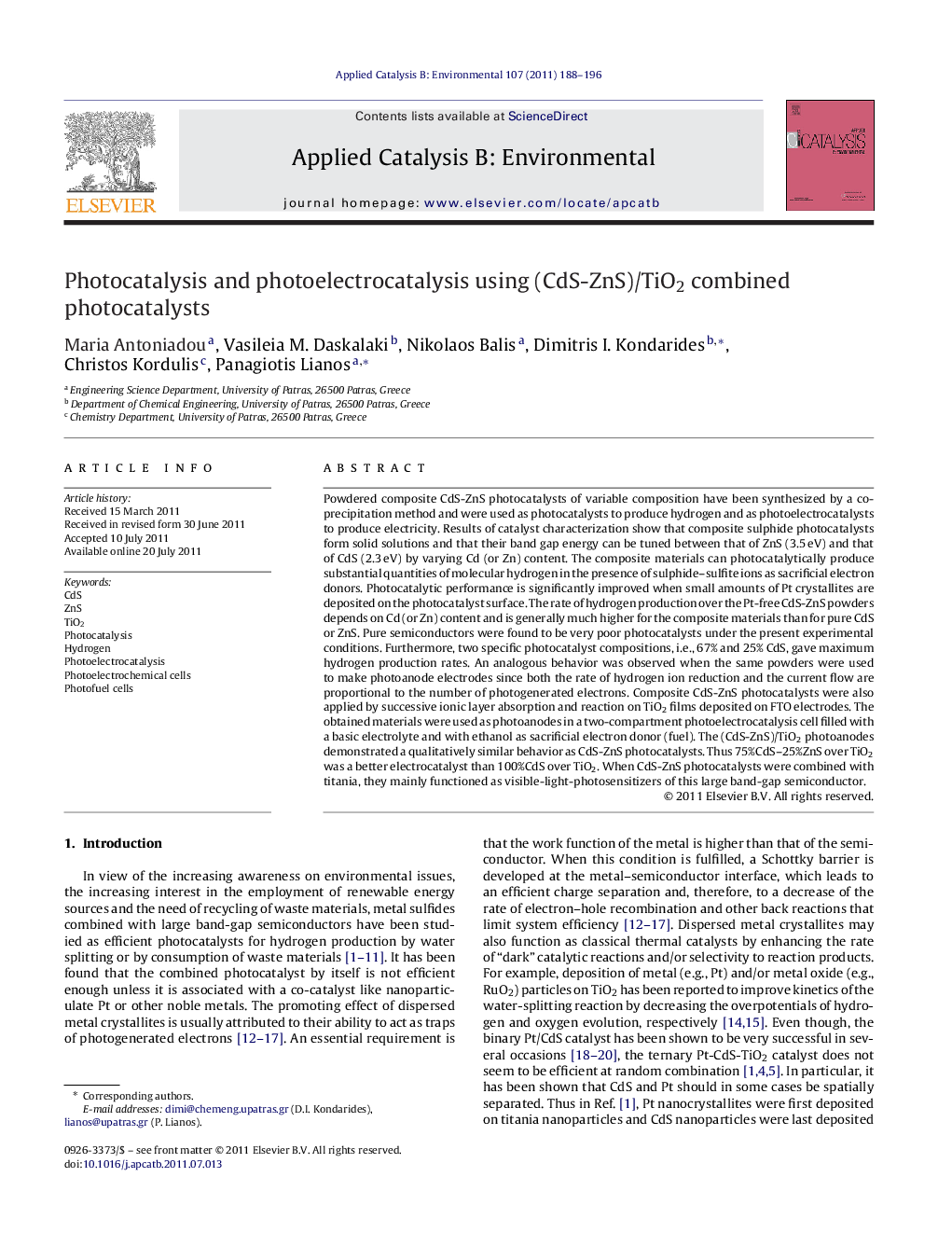| کد مقاله | کد نشریه | سال انتشار | مقاله انگلیسی | نسخه تمام متن |
|---|---|---|---|---|
| 46737 | 46446 | 2011 | 9 صفحه PDF | دانلود رایگان |

Powdered composite CdS-ZnS photocatalysts of variable composition have been synthesized by a co-precipitation method and were used as photocatalysts to produce hydrogen and as photoelectrocatalysts to produce electricity. Results of catalyst characterization show that composite sulphide photocatalysts form solid solutions and that their band gap energy can be tuned between that of ZnS (3.5 eV) and that of CdS (2.3 eV) by varying Cd (or Zn) content. The composite materials can photocatalytically produce substantial quantities of molecular hydrogen in the presence of sulphide–sulfite ions as sacrificial electron donors. Photocatalytic performance is significantly improved when small amounts of Pt crystallites are deposited on the photocatalyst surface. The rate of hydrogen production over the Pt-free CdS-ZnS powders depends on Cd (or Zn) content and is generally much higher for the composite materials than for pure CdS or ZnS. Pure semiconductors were found to be very poor photocatalysts under the present experimental conditions. Furthermore, two specific photocatalyst compositions, i.e., 67% and 25% CdS, gave maximum hydrogen production rates. An analogous behavior was observed when the same powders were used to make photoanode electrodes since both the rate of hydrogen ion reduction and the current flow are proportional to the number of photogenerated electrons. Composite CdS-ZnS photocatalysts were also applied by successive ionic layer absorption and reaction on TiO2 films deposited on FTO electrodes. The obtained materials were used as photoanodes in a two-compartment photoelectrocatalysis cell filled with a basic electrolyte and with ethanol as sacrificial electron donor (fuel). The (CdS-ZnS)/TiO2 photoanodes demonstrated a qualitatively similar behavior as CdS-ZnS photocatalysts. Thus 75%CdS–25%ZnS over TiO2 was a better electrocatalyst than 100%CdS over TiO2. When CdS-ZnS photocatalysts were combined with titania, they mainly functioned as visible-light-photosensitizers of this large band-gap semiconductor.
Figure optionsDownload as PowerPoint slideHighlights
► Composite CdS-ZnS photocatalysts are combined with TiO2.
► Application in photocatalysis or photoelectrocatalysis processes.
► Production of hydrogen or electricity.
► Composite photocatalysts are more efficient than pure CdS or ZnS.
Journal: Applied Catalysis B: Environmental - Volume 107, Issues 1–2, 31 August 2011, Pages 188–196